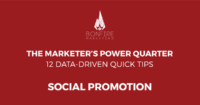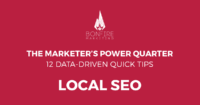This is the second piece in a three-part series on photography best practices for marketers and brands. Learn how to select stock photography and mobile photography tips and techniques.
One of the best ways to represent a brand or product is with visuals. When it comes to being relatable in design, nothing beats assets incorporating photography. People identify with the realness of photography, often connecting with it on an emotional level.
If you’re working with a limited budget or timeline, stock photography is usually the most viable option. However, understand that the authenticity of custom brand photography always trumps stock photos. When thinking of brand photography, there are two main types to consider.
2 types of brand photography
- Product photography: shows a clear shot of a product and all it has to offer. If a company sells a product, they should have photos of it on a plain or transparent background, highlighting any important features.
- Lifestyle photography: shows the product in action while conveying who a brand is and aspires to be. Images should feature individuals within a brand’s target market(s) and any relevant accessories or activities. These images help paint a picture of how the product can be used in real life and how life can feel when using the product.
Brand photography can be outsourced to professionals or attempted in-house if you have the proper equipment and knowledge. You can find a lot of DIYs and hacks on creating lighting and setups for product photography online.
A guide to DSLR camera settings
If you have the camera and the confidence, you should aim to shoot product photography using the following DSLR camera guidelines:
Camera mode: Default to aperture priority.
Image settings: Shoot in RAW if you have the capability on your camera and in editing (you will need a special program to open and process them). RAW files are the largest and contain the most data available to alter. If that’s not an option, set to the largest JPEG setting you have. Some cameras provide quality options as well; if available, set to “super fine.”
Aperture: For product photography, the aperture should be the highest f-stop your lens offers, such as f/16 or higher. This allows your camera to capture the most detail. However, a larger f-stop means less light getting into the camera and a longer shutter speed, so you’ll need to hold still. A tripod might be a good investment!
For lifestyle images — especially those featuring people or moving parts — you may need to adjust to a lower aperture depending on movement and light availability. Using apertures of f/3 or lower will create a shallow depth of field, leaving an out-of-focus background with more light. This also means the photo processes quicker, which is good for moving subjects. You will likely need to experiment with different apertures to find the perfect combination for your lighting and focal needs.
ISO: ISO measures your camera’s sensitivity to light. A lower ISO means your camera is less sensitive to light, but will produce less noise and graininess. For product photography, you will want to set your ISO as low as possible (ISO 100 or lower). This again means you’ll need a steady hand and good lighting.
For lifestyle photography, you may need to adjust to a higher ISO depending on your shooting conditions and subjects. Try to stick to under ISO 600 and keep that tripod handy. If you’re having trouble capturing a crisp image without blur, turn the ISO up to a slightly higher setting or adjust the aperture to a lower f-stop.
White balance: Set to auto. If you feel the balance is off, you can go through the settings and adjust.
Once images are taken, you will likely need to make further edits in Photoshop, Lightroom or a similar program. Best of luck with your new brand photography!
Related resources:
More Content
The Marketer’s Power Quarter: Boost Social Promotion
This is the ninth in a 12-part series of quick-fix tips to improve your digital marketing results. Catch up on our last tip, and subscribe to our newsletter to get
The Marketer’s Power Quarter: A Local SEO Strategy
This is the sixth in a 12-part series of quick-fix tips to improve your digital marketing results. Catch up on our last tip, and subscribe to our newsletter to get
The Marketer’s Power Quarter: Better Ad Retargeting
This is the fifth in a 12-part series of quick-fix tips to improve your digital marketing results. Catch up on our last tip, and subscribe to our newsletter to get the




Leave A Comment